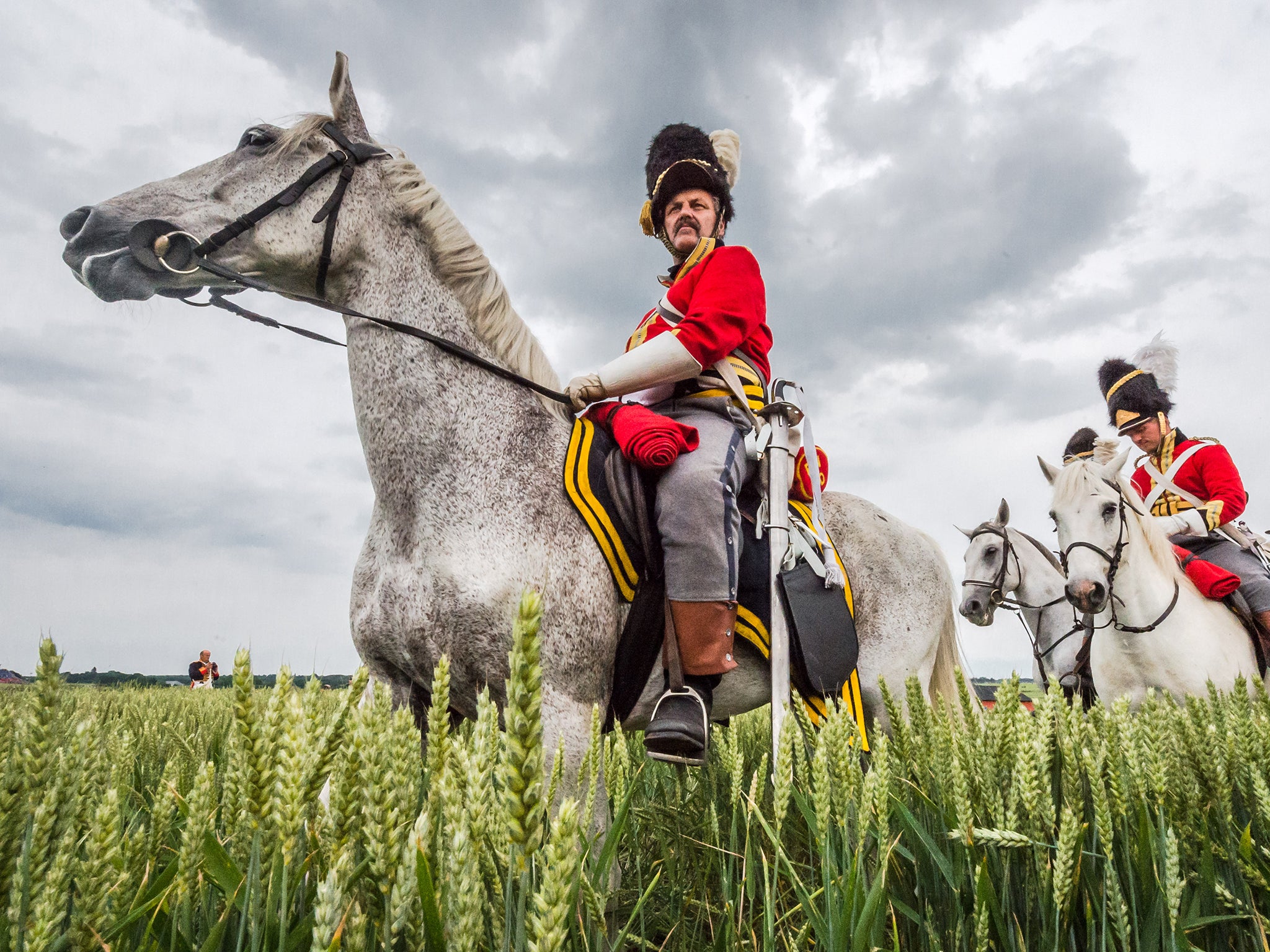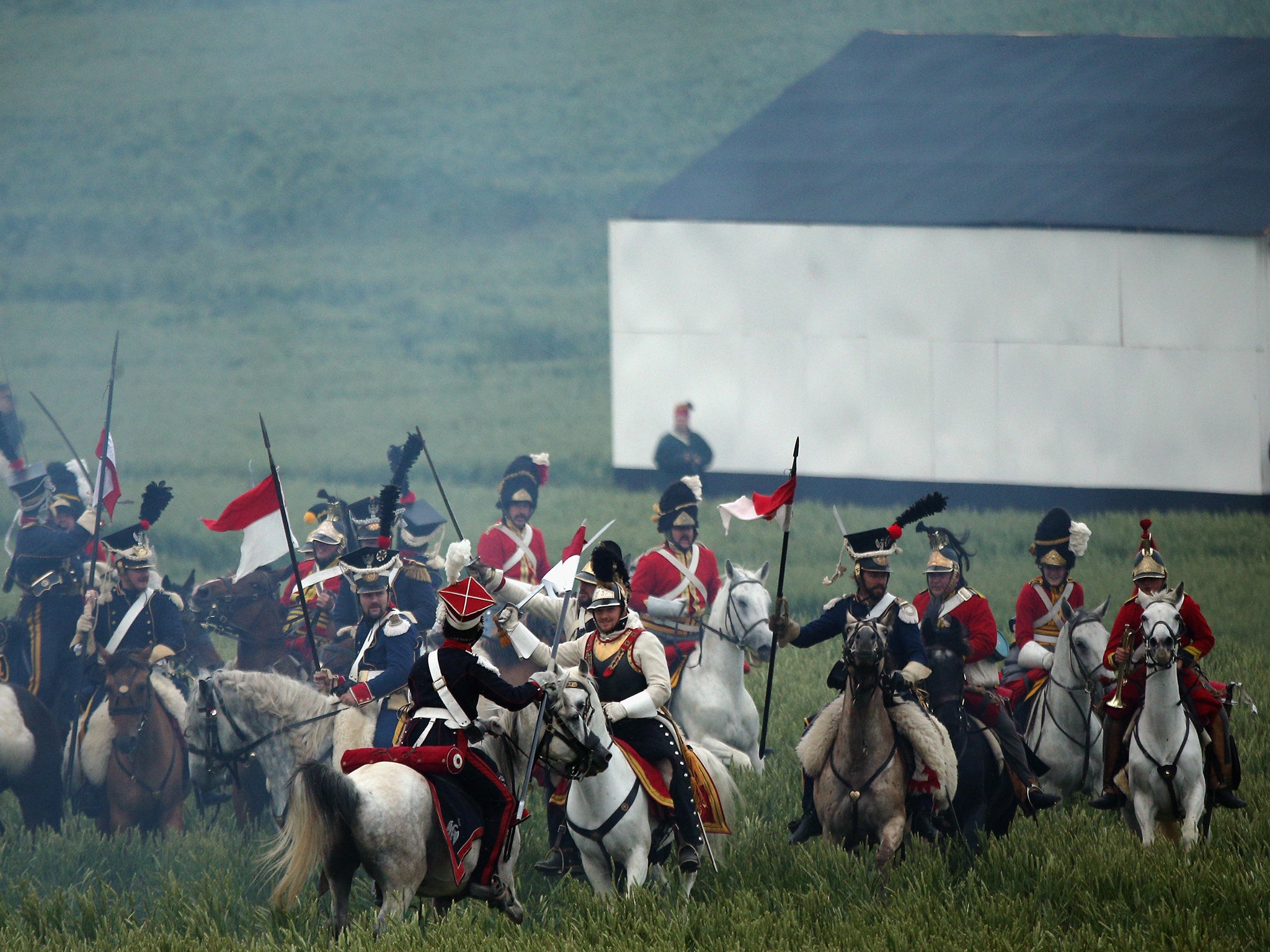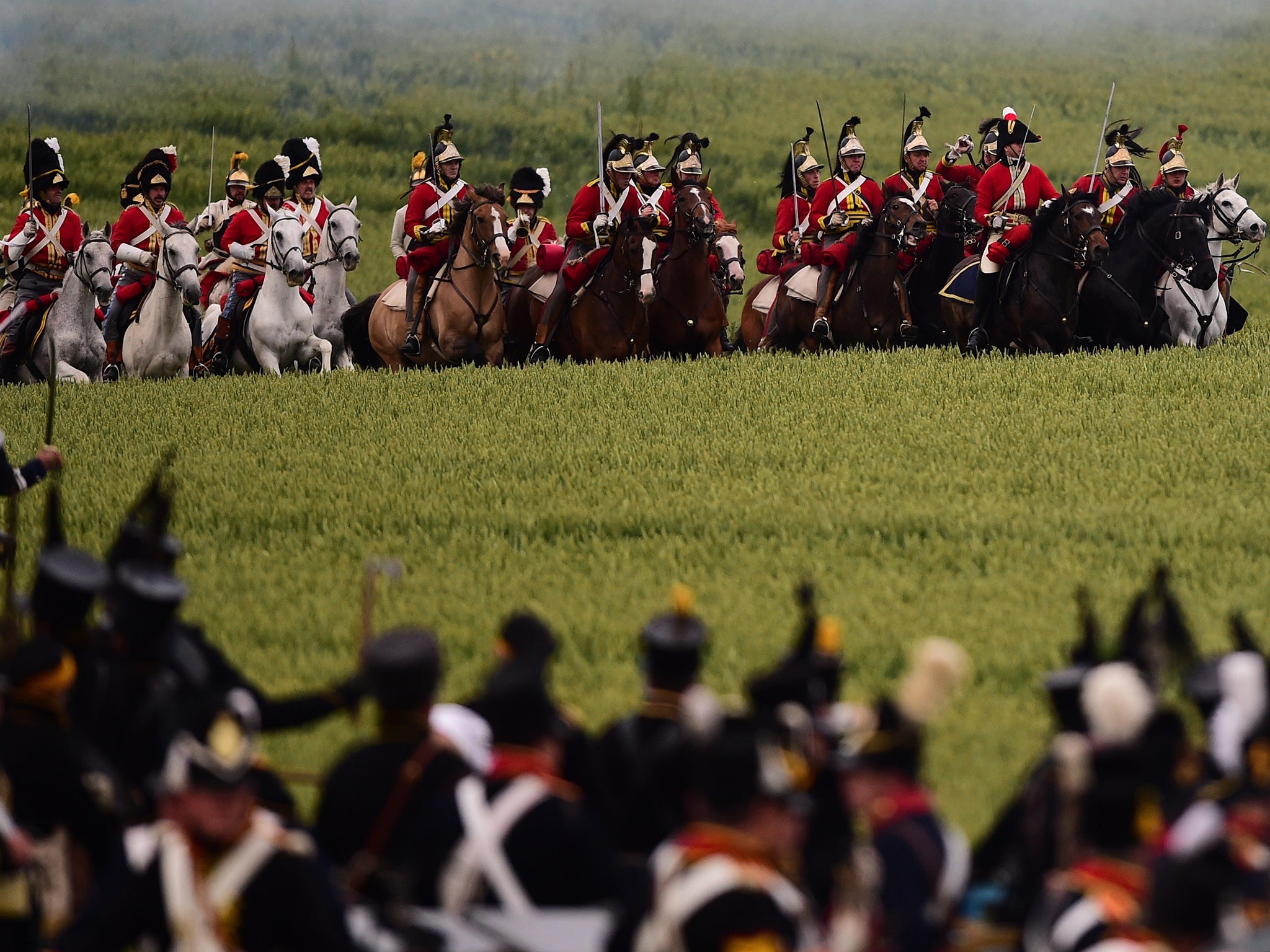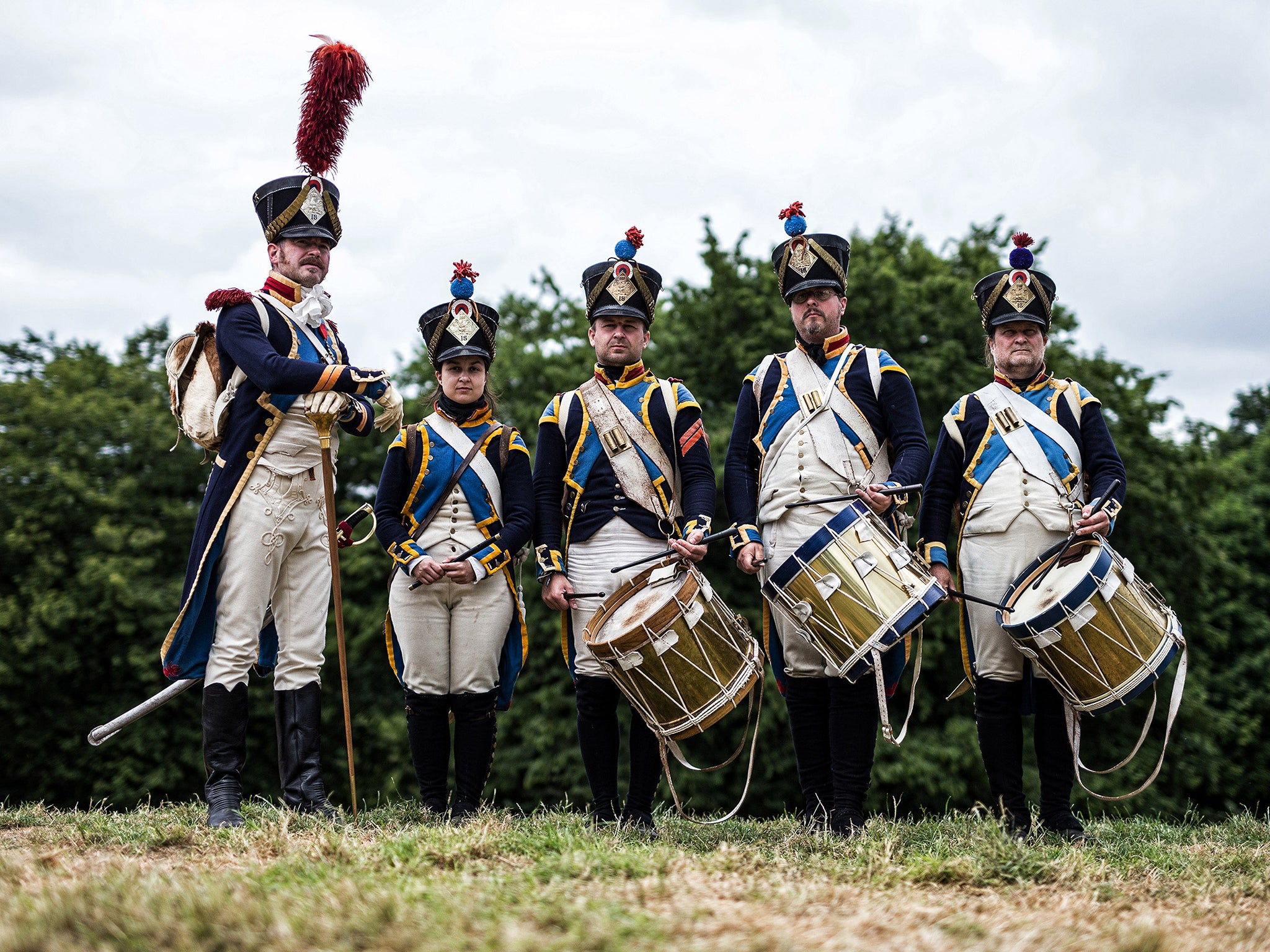Battle of Waterloo: How I played a part in Napoleon's downfall
David Ryan joins the charge towards French lines in Belgium’s bicentennial Waterloo commemoration - pity he’s lost his sword, though...

Your support helps us to tell the story
From reproductive rights to climate change to Big Tech, The Independent is on the ground when the story is developing. Whether it's investigating the financials of Elon Musk's pro-Trump PAC or producing our latest documentary, 'The A Word', which shines a light on the American women fighting for reproductive rights, we know how important it is to parse out the facts from the messaging.
At such a critical moment in US history, we need reporters on the ground. Your donation allows us to keep sending journalists to speak to both sides of the story.
The Independent is trusted by Americans across the entire political spectrum. And unlike many other quality news outlets, we choose not to lock Americans out of our reporting and analysis with paywalls. We believe quality journalism should be available to everyone, paid for by those who can afford it.
Your support makes all the difference.So, here I sit, on my grey horse overlooking the battlefield at Waterloo. My mount, Champagne, is full of fizz and won’t stand still. This Lipizzaner from Hungary is gouging at the ground with one hoof, apparently keen to join the fray that is slowly unfolding below. She looks every inch the war horse. I probably also look the part in the red jacket and tall bearskin cap of the Scots Greys, except for one detail; my sword fell off on the way to the battlefield.
The infantry regiments file into place in front of us – a colourful pageant with provocative flags and drums and defiant bagpipes to set the tone. And the paying public, 50,000 of them, are filing into the temporary stands set up behind us and on each side amid this rolling farmland south of Brussels. The spectators have come from all over the world to be here, as have almost 6,000 Napoleonic re-enactors.
My eyes are fixed on the predominantly blue ranks beyond. I had hoped the French might not turn up, but there they stand as they did 200 years ago almost to the day: Chasseurs, cuirassiers, lancers. My mouth is dry and my canteen is empty. I’ve checked my remaining kit 20 times. Nothing is out of place, except perhaps me.

To embed journalists with the military is nothing new, but to place a hapless hack two centuries back, as a trooper in the Royal North British Dragoons? That’s got to be a bit of a scoop. So, here I sit on my steed that is side-stepping left and right and edging backwards every few seconds. Occasionally her ears go back and she lashes out with a hoof at the closely packed rank behind. “Dress the ranks, that man,” bellows a passing staff officer in bicorn hat and well-tailored trousers.
I am expected to play my part and to charge, swordless, down this field of swaying green wheat. And, should I come across a French lancer? Well, laddie, hit him with a blood-curdling cry of ‘Scotland Forever”. No one down there is going to try to hurt me, historical re-enactors on the whole are a fairly gregarious bunch. But accidents do happen and horses are unpredictable beasts, especially around things that go bang.
As the 200th anniversary Waterloo re-enactment gets under way there are plenty of things “going bang”. Up to 100 cannon and thousands of muskets begin firing in rippling volleys. They are mightily impressive as they spit flame and cough out dense white smoke that spreads across the field like a thick winding-sheet.

“Hurry up and wait”, that’s the way of armies, and in the previous three days there has been plenty of waiting in between cavalry training and glad-handing with sponsors including, not unfortuitously, the Waterloo brewery, where they make “the beer of bravery”. I had a bucketload of it last night and it isn’t working!
The brewery, which is on the site of a new museum set in the restored Mont-Saint-Jean farmhouse and makeshift hospital where up to 6,000 allied wounded were treated, has backed the Greys and Glory campaign to bring their famous regiment (now the Royal Scots Dragoon Guards) back for the first time to the field where it once charged to stop Bonaparte breaking through Wellington’s centre, and plundered the French 45th Regiment’s prized Imperial Eagle, one of only a brace taken on the day.
Apart from the Glory, there was also Death in no short measure. By day’s end on 18 June there were 50,000 left expired, wounded and dying. Casualties were still being brought in a week later. That’s a lot of human misery to pack into three square miles of Belgium. On that butcher’s bill were almost 200 Greys, half the regiment, with 105 dead, including most of their officers. The event was marked by Lady Elizabeth Butler’s famous painting of 1881 and has not been forgotten by today’s re-enactors. For, as we take our place in the British line, there is plenty of goodwill and encouragement, especially from those kilted Highlanders.

The original troopers were mostly recruited in Scotland, but today’s Greys are a mixed bag, with riders from the US, Germany, Britain, France and Hungary. Most are from California, where a Scots Greys riding-display group has existed for eight years, the brainchild of Fritz Bronner and his wife, Margie, who worked flat-out for months to make this happen.
Their point-man in Europe is Jonathan Findlay, a former captain in the Royal Scots Dragoon Guards whose great, great-grandfather was James Wemyss, a surviving officer from among the 400 Greys who charged at Waterloo. He wrote back to his mother: “Our Regiment has suffered very severely. We have only about 26 men, including officers, remaining on the field.”
Back to today, and a despatch rider approaches, gliding through the swaying, knee-high wheat.
“The heavy cavalry will advance” – this is it then, and just for a moment I suspect my thoughts are not unlike those of my illustrious predecessors as I tell myself: “Don’t get isolated and stay on the bloody horse.”
Join our commenting forum
Join thought-provoking conversations, follow other Independent readers and see their replies
Comments